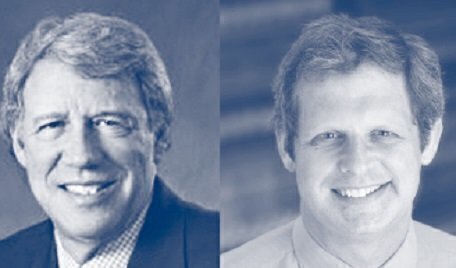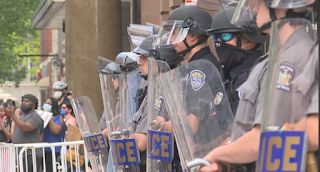Housekeeping: Please check your grades. If you have not turned one of these assignments, you will find a ZERO. Please rectify this situation.
I I am missing lots of work from folks. These have been our assignments, so far this year. If you have not turned in one of the following, you have a zero in its place. If you have questions or concerns, please contact me. We can set up a zoom time, and on Wednesdays I have office hours from 9:30 to 10:30 and 1:30 to 2:30 See link here: https://classroom.google.com/c/MTQ5Mzc1Nzg1MTAz/m/MTc0MjYwODU2NDQ3/details
Are you interested in purchasing a Black Lives Matter shirt? The on-line store is open until October 2. Make sure to let them know you are a SOTA student. Check it out:
https://flowercityschoolblm-itemorder-com.itemorder.com/sale
News of the Day: Coronavirus
1. This time last year, the headline we are facing today would have been unbelievable. Unfathomable. A sick joke. More than 200,000 people have died on American soil of a virus that, mere months ago, was completely unknown to us. Around the world, more than 970,000 lives have been lost. With no vaccine and no widely adopted solutions, the misery won’t be ending soon.
CNN went back through their archives to see what it was like in those early days before the coronavirus pandemic became an international tragedy and changed nearly every aspect of our lives.
The first time CNN.com reported on the virus was January 8.
It was part of a so-called “mysterious pneumonia outbreak” in Wuhan, China. At the time, scientists reported no human-to-human transmissions and no deaths. We know now that the virus may have already been in the US at that time, silently lurking and spreading.
The virus was compared to the SARS pandemic that killed 774 people in Asia in 2002 and 2003. To put that in perspective, since the first known US Covid-19 death on February 6, an average of more than 858 people have died in the United States from the disease every day -- an entire SARS pandemic every several hours.
The first time you read about coronavirus was January 21.
“A new virus in China is threatening to become a pandemic,” the subject line said. At the time, the official global death toll was six. By the time you finish reading this newsletter, at least six people in the world will have died of Covid-19 since you began.
That’s not an exaggeration. There were 4,795 worldwide deaths yesterday. That’s three deaths per minute.
To put it in another perspective, the total US coronavirus death toll is equivalent to one 9/11 attack every day for 66 days. The US coronavirus death toll is more than the number of Americans killed in battle in the five most recent wars combined: the Korean War, the Vietnam War, the Iraq War, the War in Afghanistan and the Persian Gulf War.
No matter how you do the math, you’re left with truly horrifying figures. But those figures represent so much more. They represent real lives, real people who leave behind devastated families and unfinished legacies. People who, were it not for this virus, would probably still be alive today. No comparison can properly convey such a loss.
In class: applying Tuesday / Wednesday readings.
Having completed the reading (another copy below) that gives a succinct interpretation of the First Amendment, we are going to apply your understanding to contempory issue of Black Lives Matter.
A Common Interpretation: Freedom of Speech and the Press

“Congress shall make no law . . . abridging the freedom of speech, or of the press.” What does this mean today? Generally speaking, it means that the government may not jail, fine, or impose civil liability on people or organizations based on what they say or write, except in exceptional circumstances.
Although the First Amendment says “Congress,” the Supreme Court has held that speakers are protected against all government agencies and officials: federal, state, and local, and legislative, executive, or judicial. The First Amendment does not protect speakers, however, against private individuals or organizations, such as private employers, private colleges, or private landowners. The First Amendment restrains only the government.
The Supreme Court has interpreted “speech” and “press” broadly as covering not only talking, writing, and printing, but also broadcasting, using the Internet, and other forms of expression. The freedom of speech also applies to symbolic expression, such as displaying flags, burning flags, wearing armbands, burning crosses, and the like.
The Supreme Court has held that restrictions on speech because of its content—that is, when the government targets the speaker’s message—generally violate the First Amendment. Laws that prohibit people from criticizing a war, opposing abortion, or advocating high taxes are examples of unconstitutional content-based restrictions. Such laws are thought to be especially problematic because they distort public debate and contradict a basic principle of self-governance: that the government cannot be trusted to decide what ideas or information “the people” should be allowed to hear.
There are generally three situations in which the government can constitutionally restrict speech under a less demanding standard.
1. In some circumstances, the Supreme Court has held that certain types of speech are of only “low” First Amendment value, such as:
a. Defamation: False statements that damage a person’s reputations can lead to civil liability (and even to criminal punishment), especially when the speaker deliberately lied or said things they knew were likely false. New York Times v. Sullivan(1964).
b. True threats: Threats to commit a crime (for example, “I’ll kill you if you don’t give me your money”) can be punished. Watts v. United States(1969).
c. “Fighting words”: Face-to-face personal insults that are likely to lead to an immediate fight are punishable. Chaplinsky v. New Hampshire (1942). But this does not include political statements that offend others and provoke them to violence. For example, civil rights or anti-abortion protesters cannot be silenced merely because passersby respond violently to their speech. Cox v. Louisiana (1965).
d. Obscenity: Hard-core, highly sexually explicit pornography is not protected by the First Amendment. Miller v. California (1973). In practice, however, the government rarely prosecutes online distributors of such material.
e. Child pornography: Photographs or videos involving actual children engaging in sexual conduct are punishable, because allowing such materials would create an incentive to sexually abuse children in order to produce such material. New York v. Ferber (1982).
f. Commercial advertising: Speech advertising a product or service is constitutionally protected, but not as much as other speech. For instance, the government may ban misleading commercial advertising, but it generally can’t ban misleading political speech. Virginia Pharmacy v. Virginia Citizens Council(1976).
Outside these narrow categories of “low” value speech, most other content-based restrictions on speech are presumptively unconstitutional. Even entertainment, vulgarity, “hate speech” (bigoted speech about particular races, religions, sexual orientations, and the like), blasphemy (speech that offends people’s religious sensibilities), and violent video games are protected by the First Amendment. The Supreme Court has generally been very reluctant to expand the list of “low” value categories of speech.
2. The government can restrict speech under a less demanding standard when the speaker is in a special relationship to the government. For example, the speech of government employees and of students in public schools can be restricted, even based on content, when their speech is incompatible with their status as public officials or students. A teacher in a public school, for example, can be punished for encouraging students to experiment with illegal drugs, and a government employee who has access to classified information generally can be prohibited from disclosing that information.Pickering v. Board of Education (1968).
3. The government can also restrict speech under a less demanding standard when it does so without regard to the content or message of the speech. Content-neutral restrictions, such as restrictions on noise, blocking traffic, and large signs (which can distract drivers and clutter the landscape), are generally constitutional as long as they are “reasonable.” Because such laws apply neutrally to all speakers without regard to their message, they are less threatening to the core First Amendment concern that government should not be permitted to favor some ideas over others. Turner Broadcasting System, Inc. v. FCC(1994). But not all content-neutral restrictions are viewed as reasonable; for example, a law prohibiting all demonstrations in public parks or all leafleting on public streets would violate the First Amendment. Schneider v. State (1939).
Courts have not always been this protective of free expression. In the nineteenth century, for example, courts allowed punishment of blasphemy, and during and shortly after World War I the Supreme Court held that speech tending to promote crime—such as speech condemning the military draft or praising anarchism—could be punished. Schenck v. United States (1919). Moreover, it was not until 1925 that the Supreme Court held that the First Amendment limited state and local governments, as well as the federal government. Gitlow v. New York (1925).
But starting in the 1920s, the Supreme Court began to read the First Amendment more broadly, and this trend accelerated in the 1960s. Today, the legal protection offered by the First Amendment is stronger than ever before in our history.
Geoffrey R. Stone is Edward H. Levi Distinguished Service Professor of Law, University of Chicago Law School. Eugene Volokh is Gary T. Schwartz Professor of Law, UCLA School of Law.
You can read more from each author on our Interactive Constitution project on this topic, as they offer viewpoints beyond this common interpretation: Fixing Free Speech By Geoffrey R. Stone | Frontiers For Free Speech By Eugene Volokh
Stone, Geoffrey, and Eugene Volkh. “A Common Interpretation: Freedom of Speech and the Press.” National Constitution Center – Constitutioncenter.org, constitutioncenter.org/blog/a-common-interpretation-freedom-of-speech-and-the-press.





No comments:
Post a Comment